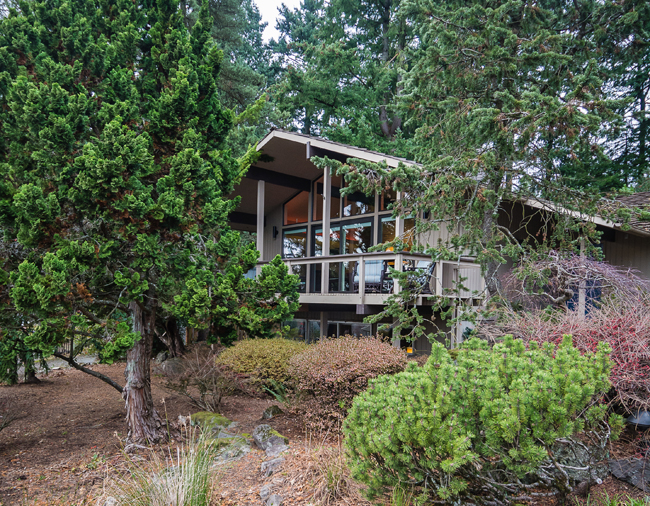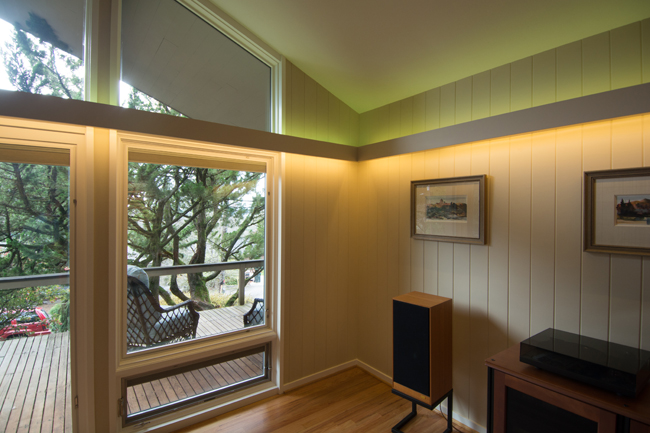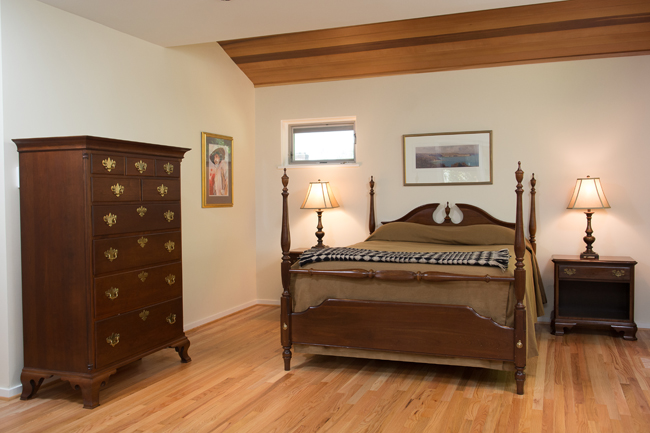Written by Dan Cook | Photos by Jeff Freeman | www.mac-bo.com
 When it comes to energy efficiency, it’s the attention to detail that separates the pale green from the emerald green projects. Marc Hoffman was looking for an emerald green solution. That’s why he wanted Ed Hesse and his firm, Mac-Bo, on the project when he went in search of his dream home.
When it comes to energy efficiency, it’s the attention to detail that separates the pale green from the emerald green projects. Marc Hoffman was looking for an emerald green solution. That’s why he wanted Ed Hesse and his firm, Mac-Bo, on the project when he went in search of his dream home.
Mac-Bo is one of Portland’s premier home remodeling businesses. The firm specializes in burnishing dusty, out-of-date mid-century homes into the gems that they truly can be.
Hoffman asked Hesse to help him find a home after Hoffman decided to move back to Portland from Philadelphia. Hoffman’s ideal residence would feature certain characteristics. Good bones. Space. Light. Comfort. Wood. Stone. Privacy. A great kitchen. And energy efficiency.
The 2,800-square-foot mid-century modern Hesse found offered all that and more. Custom built by architect A. P. “Benny” DiBenedetto, it was airy and spacious, with wood floors and large granite fireplaces.The home immediately appealed to Hoffman.
But it needed work — lots of it — to update it structurally and for energy efficiency. Getting the home from theory to reality took the better part of 2014 to complete the work, for it presented Mac-Bo with some unique challenges.
“This is a fine home from the 1960’s that hadn’t been remodeled since it was built virtually untouched,” said Hesse. “Our job was to bring the house forward to current standards without spoiling its former glory.”
Lighted valence with LED’s changes color at the touch of a dial.
|
The home had lots of glass — huge windows, skylights — all great for natural light, but not so good for energy efficiency. It also had some dark, enclosed rooms which, in combination with the open, airy kitchen, dining room and living room, meant the air conditioning system was cooling some very warm rooms while making cool rooms too cool. And vice versa, depending on the weather.
The furnace was in the wrong spot, the water heater wasn’t ableto wasn’t able to meet energy standards. Demand for hot water now in a bathroom located at the other side of the house meant long waits and water down the drain. Many things have changed for the better since DiBenedetto built his dream home in 1963.
Despite its age, there was a magnificent home in there just waiting to emerge.
“The home was dated and was expensive to heat and cool. But its bones are beautiful,” said architect Thia Bankey, who often works on Mac-Bo’s projects. “We kept the bones.”
The living room serves as a fine example of keeping the bones but fleshing them out for energy efficiency and structural integrity. The front of the room faces south, an elegant wall of wood and glass A-framing the front porch, yard and street. But the main support for the massive glass windows was giving way and sagged. The old windows were a disaster from an energy standpoint. The wood frames holding it all in place also let heat in and out. It was a wall of high heating bills from Hoffman’s viewpoint.
Mac-Bo kept the look and feel of the room but replaced just about the entire creation. Pella window systems with integral blinds and disappearing screens were installed (they can be found throughout the renovated home). The wood was replaced with engineered steel, insulated and sheathed in wood. The entire structure was tightened and reinforced to let in maximum light while sealing heat in during the winter and out during the summer.
The master bedroom reveals a semi-vaulted ceiling over the headboard with concealed indirect lighting.
|
Mac-Bo’s solution to the temperature variances throughout the home was a zoned system — the home was divided into four distinct air conditioning zones, controlled by Nest thermostats. When the light-bathed living room needed cooling on a hot day, the AC was cranked there. The darker basement rooms just a few steps away placed a more modest demand on the system.
The old water heater went away, replaced by a state of the art model including a timed recirculation system which delivers hot water immediately on demand even at the powder room on the other end of the house! High performance insulation methods were used throughout the renovation and in any wall that had to be opened. Sound insulation between rooms and cast iron drains keep the house politely quiet.
The ensuing project showcased Mac-Bo’s range of remodeling capabilities, from the planning stages to the final touches in which the firm specializes and that serve to distinguish its projects. Architect Bankey played a crucial role in formulating the renovation plan, anticipating the unexpected, finding ways around building flaws dating from the original construction. The entire project had but a handful of change orders, a fact that amazed Hoffman.
“They knew what they were doing. They knew my vision for the home, they captured it and took it beyond what I had thought possible,” he said, leaning back on his living room sofa on a sunny day, the light pouring into the stunningly reimagined room. “I’ve got my dream home thanks to Mac-Bo.”







